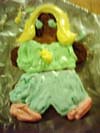(#52)
When I first read The Scarlet Letter by Nathaniel Hawthorne, I was in a high school English class. As a result, I was looking for very specific things: foreshadowing, symbolism, allegory, and so on. When you are programmed to scan for these literary concepts, you become less of a reader and more of a machine. I clearly remember sitting splayed out on the floor of my kitchen, leaning back on the dishwasher, holding the school-issued copy in my hands. Oddly enough, I recall my position amongst the household appliances more than the story itself. In all respects, I had become like the dishwasher when it came to reading for school—focused, narrow, and intent. I searched, I found, I got an A on the assignment. Period.
I’m a lover of English classes in general, but I grudgingly admit that the way they taught us to read took the magic out of the action. If I was too busy looking for symbolism, there was no way I could get lost in a story that survived the 19th century novel mills to become the classic it is today. With this in mind, I set forth into Hawthorne’s Puritan Boston once again.
The Scarlet Letter follows the trials and tribulations of Hester Prynne, a woman accused of adultery and sentenced to wear a red letter A over her heart. With her illegitimate daughter Pearl, she lives on the outskirts of Puritan life, embroidering the garments of the rich and holy about town to scrape together a living. In town, Hester’s supposedly dead husband skulks about trying to locate the necessary partner in her crime.
On my second reading, I was entranced with the mother-daughter relationship between Hester and Pearl. After having it drilled into my in school that Pearl was the embodiment of the literal and spiritual wilds around Puritan civilization, I enjoyed seeing Pearl as less of a symbol and more a child. I pitied Hester for her struggles with single motherhood, unable to consult with more learned women while dealing with a little girl with a singular mind of her own. Pearl controls Hester with sheer force of personality, so different than the controlled top-down nature of other Puritan families. A book that I had previously seen as just a bunch of cogs propelling me towards a grade suddenly turned into a human drama on the second reading.
Ironically, this reading of The Scarlet Letter was spent in similar position as the first, my back propped up against a washing machine in my neighborhood laundromat. Yet, the thrum of the outside machinery coincided more with the life of the book than its individual literary elements. All together, it was a wonderful experience of reliving a story for itself. If you’ve read this before as part of curriculum, give it another chance in the real world. You’ll be surprised and gratified at the result.
Subscribe to:
Post Comments (Atom)








I am yet to read The Scarlet Letter by Nathaniel Hawthorne. I have meant to read it since long.
ReplyDeleteI hope I would love it.
This is Nancy from Israeli Uncensored News